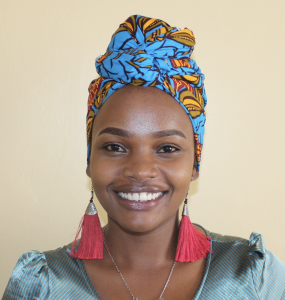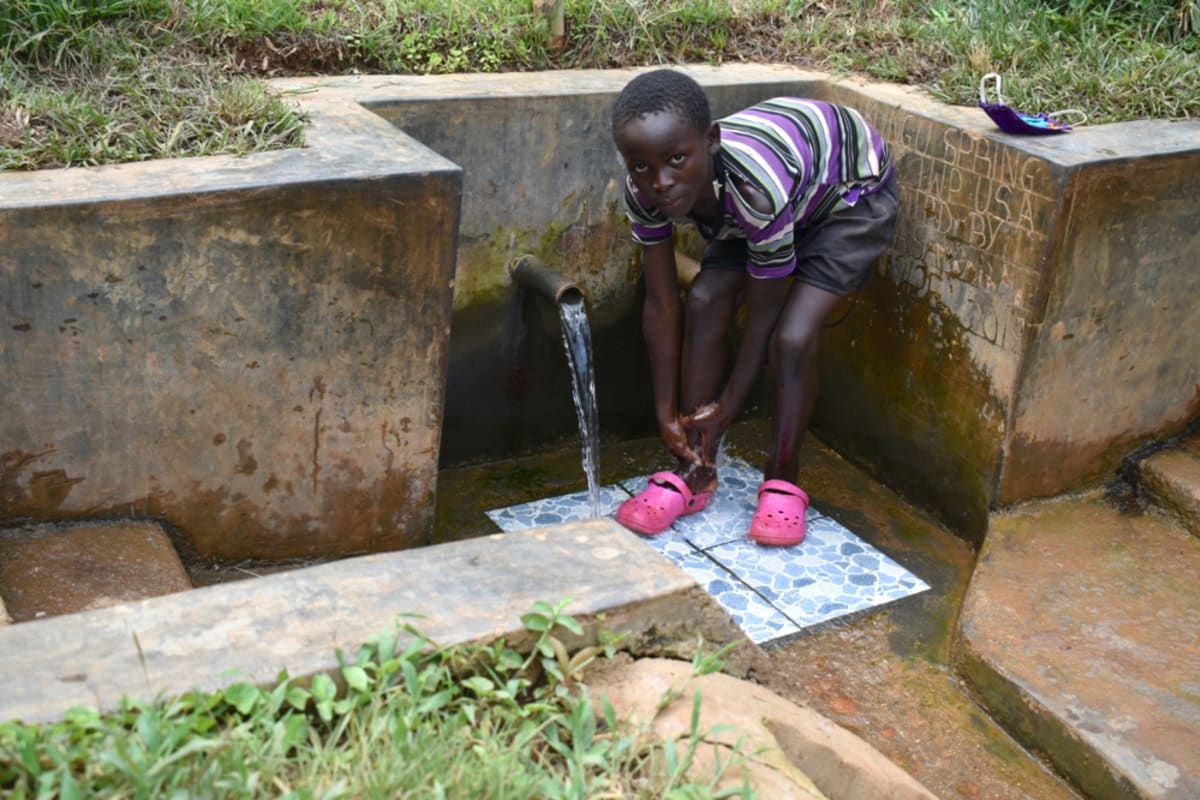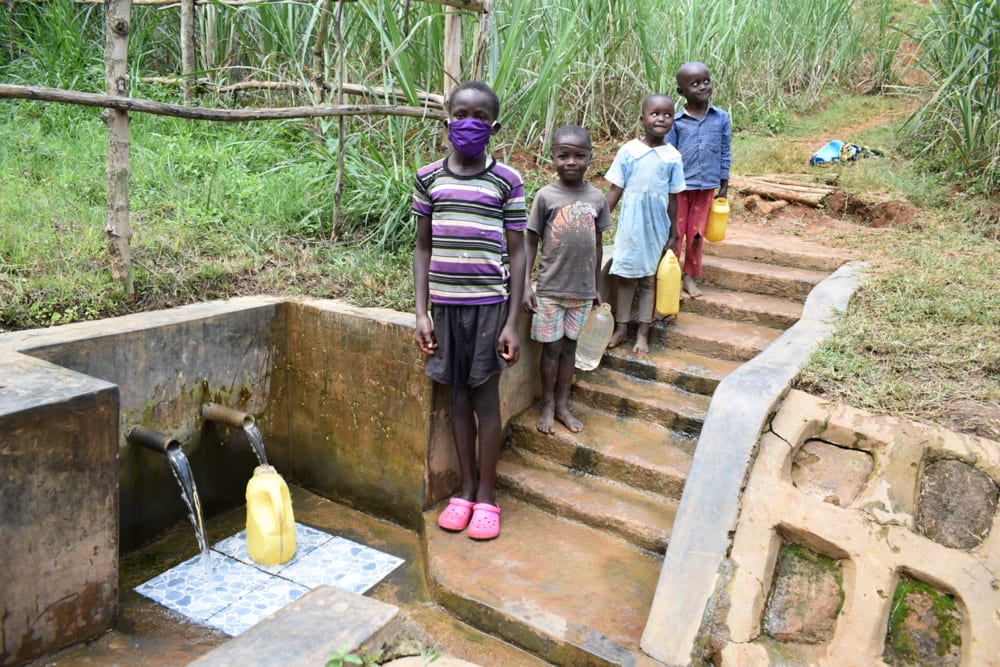July, 2020: Ewamakhumbi Community, Mukungu Spring Project Complete!
Please note, all photos in this report were taken before social distancing recommendations went into effect.
Ewamakhumbi Community now has access to clean water! Mukungu Spring has been transformed into a flowing source of water thanks to your donation. We protected the spring, constructed 5 sanitation platforms for different households in the community, and we trained the community on improved sanitation and hygiene practices.

Women celebrate the completed spring
"The members of Mukungu Spring have been the best when it came to material mobilization and community engagement," said Georgina Kamau, the Lead Field Officer for this project.
"They made the construction process very smooth for the artisan. Supervision was also easy as well. The members were very dedicated to getting clean and safe drinking water. They continue to return their gratitude for the project and hope to get more initiatives in their community."

Community members were excited to access clean and safe drinking water for the first time from Mukungu Spring.
"The protected spring will make fetching water fun and easy for me since the place is now clean and easy to access," said 34-year-old farmer Mildred Ingavi.

"We have been experiencing cold and flu from time to time and spending money on drugs, but this will stop since the water is now protected from contamination," said 68-year-old farmer Aggrey Musungu.
Preparing for Spring Protection
Community members worked together to source and carry all locally available construction materials to the spring. These included bricks, sand, stones, and fencing poles. Some people also chiseled away at large stones to break them down into gravel. Because people have to carry most items by hand, the materials collection process can take anywhere from a few weeks to months.
When everything was prepared, we sent a lorry to the community to deliver the rest of the construction materials including the cement, plastic tarps, and hardware. Then, our artisan and field officers deployed to the spring to begin work. While the field officers traveled to and from the site each day throughout the construction process, the artisan remained in the community. To accommodate him, individual households provided meals and a place to sleep each night.
The last step before construction commenced was taking a water sample from the unprotected spring. We sent the sample to a government laboratory for testing to identify the kinds of contaminants in the water before its protection. These often include fertilizers and pesticides from farms, animal and human feces, and any number of harmful bacteria. We then shared the test results with the community to identify extra steps they could take to help ensure the spring’s water remains clean and safe after protection.
From Open Source to Protected Spring: A Step-by-Step Process
At last, it was time to dig in at the spring! Women and men lent their strength to the artisan each day to help with the manual labor. First, we cleared and excavated the spring area. We dug a drainage channel below the spring and several surface runoff diversion channels above and around the spring. These help to divert the environmental contaminants identified in the pre-construction water quality test.

Excavation begins
To ensure community members could still fetch water throughout the construction process, we also dug temporary diversion channels from the spring’s eye around the construction site. This allowed water to flow without severely disrupting community members’ water needs or construction work.

Crabs found living in the spring during excavation - visual proof of animal contamination
Excavation created space for setting the spring’s foundation made of thick plastic tarp, wire mesh, concrete, and waterproof cement. After setting the base, we started brickwork to build the headwall, wing walls, and the stairs.
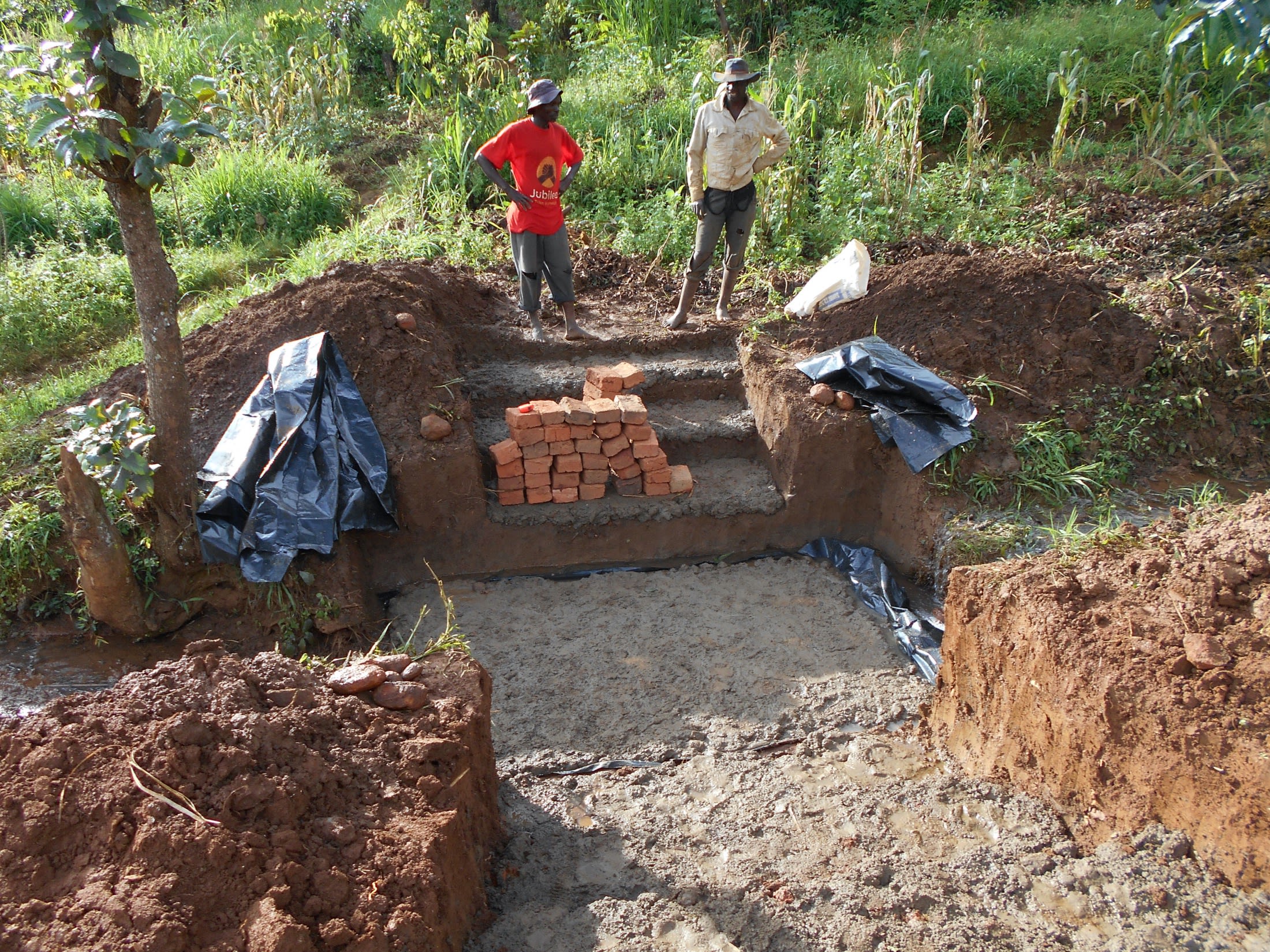
Waiting for concrete foundation to set to begin brickwork
Next, we began one of the most crucial steps of spring protection to ensure a fully functional water point: setting the discharge pipe. Mukungu Spring had such a naturally high yield that we decided to install 2 discharge pipes to maximize efficieny and output at the spring.

Wall construction
The discharge pipes have to be set low enough in place in the headwall so that the water level inside never rises above the spring’s eye, yet high enough to leave 18-20 inches between the pipe and the spring floor to allow room for the average jerrycan (a 20-liter container) to sit beneath the pipe without making contact.
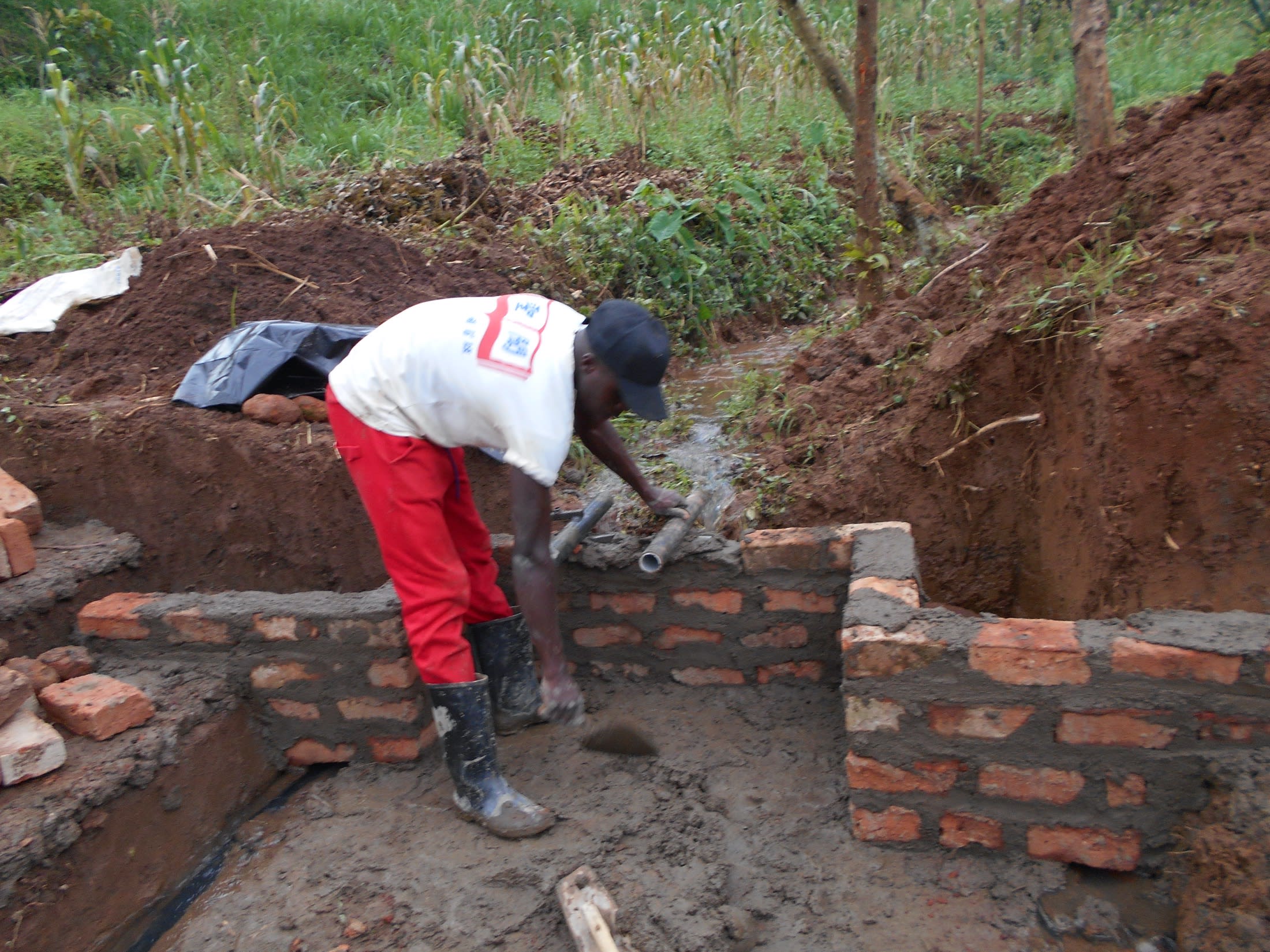
Setting the pipes
If the discharge pipe were placed too high above the spring’s eye, too much backpressure could force the flow to emerge elsewhere. Too low, and community members would not be able to easily access the water. We embedded the pipe using clay (or mortar when the clay is in short supply) and placed it at a slight incline to ensure water flows in the right direction.

Stone pitching
In coordination with brickwork, we pitched medium to large stones on both sides of the spring’s drainage channel. We then cemented and plastered each stone group into place, forming the rub walls. These help to discourage people and animals from trying to stand on that area, which could cause soil erosion and thus a clogged drainage area.

Plasterwork on the interior of the headwall
With brickwork and stone pitching completed, we turned to cement and plaster both sides of the headwall and wing walls. This reinforces the brickwork and prevents water in the reservoir from seeping through the walls. In turn, this builds enough pressure in the reservoir box to push water out through the discharge pipe.

Plasterwork
As the headwall and wing walls were curing, we cemented and plastered the stairs and installed 4 tiles beneath the discharge pipes. The tiles protect the concrete from the erosive force of the falling water, beautify the spring, and facilitate easy cleaning of the spring floor.

Backfilling with clay
With the tiles in place, we transitioned to the final stages of construction - backfilling the reservoir box. First, we cleared the collection box of any debris that may have fallen in since its construction such as dead leaves or other items. Then we redirected the temporary diversion channels back into the reservoir box, channeling water into this area for the first time. We closed off all of the other exits to start forcing the water through the discharge pipe only.

Backfilling with stones
With much help from the community, we filled up the reservoir area with the clean and large stones they gathered, arranging them in layers like a well-fitting puzzle. We covered the stones with a thick plastic tarp to minimize potential sources of contamination from aboveground, followed by a layer of soil. We piled enough soil on top to create a slight mound to compensate for the backfill’s future settlement.

Fencing and planting grass over the spring
Community members transplanted grass onto the backfilled soil to help prevent erosion. Finally, the collection area was fenced in to discourage any person or animal from walking on it since compaction can lead to disturbances in the backfill layers and potentially compromise water quality.

The entire construction process took about 2 weeks of work and patience to allow the cement and plaster to finish curing. As soon as it was ready, people got the okay from our field officers to begin fetching water. We met them there to celebrate this momentous occasion. Happiness, thanksgiving, and appreciation were the order of the day flowing in all directions.

Sanitation Platforms
All 5 sanitation platforms have been completed and handed over to their new owners. These 5 families are happy about this milestone of having a private latrine of their own and are optimistic that people will no longer leave waste outdoors. We are continuing to encourage families to finish building walls and roofs over their new latrine floors, and for other families to replicate the design after having helped construct these examples.

Sanitation platform under construction at a family's home
New Knowledge
Community member and spring landowner Robert Maina Mukungu helped organize the training in coordination with our team. Together we found the community’s preferred date for training while considering other events in the community calendar such as the agricultural season and expected gatherings. When the day arrived, Lead Field Officer for the project Facilitator Georgina Kamau along with a small team of facilitators.

A young boy demonstrates proper toothbrushing technique during the dental hygiene session at training
17 people attended training, which was held in Mr. Mukungu's homestead. The attendance was as expected, and everyone was attentive and participatory throughout the day. A balance of genders and ages was represented among the participants. The sun was scorching hot that morning but that did not affect the training session. We met at Mukungu's homestead and set up our spot under tree shade.
At the time of this training, COVID-19 was not yet worldwide and had not arrived on the scene in Kenya, so it was not a topic we covered. Since then, however, we have developed trainings exclusively on COVID-19 prevention and awareness. Keep reading below this report for more photos from the COVID-19 training at Ewamakhumbi, and see how we continue to fight COVID-19 on the frontlines in all of the communities we serve.

All eyes on Trainer Georgina
We covered several topics including community participation in the project; leadership and governance; personal and environmental hygiene; water handling and treatment; operation and maintenance of the spring and sanitation platforms; dental hygiene; the 10 steps of handwashing, and how to make and use a tippy tap and leaky tin. During the leadership and governance session, we held an election for the leaders of the newly formed water user committee.

Handwashing demonstration
We also brainstormed income-generating activities that can be used to start both a community savings account for any future minor repairs to the spring, as well as a cooperative lending group to enable members to develop their own small businesses.

Handwashing demonstration
During the leadership and governance session, the group discussed the importance of unity and togetherness. They decided to form a group which will help improve their lives "because 2 hands are better than 1" and to also help them put down rules and regulations for the spring usage and maintenance. The group was named the Mukungu Community Group. This was the most interactive part of the training in that the members asked many questions regarding the rules and regulations of the spring. This means that they actually wanted to keep the spring functional for the longest time, thought our field officers.

Handwashing volunteer
Trainer Georgina told the group that operation and maintenance of spring is actually quite simple and requires very few skills. They covered how to protect the catchment area from potential contamination, periodic maintenance of the filter package, and cleaning the spring area of leaves and other terrestrial debris.

Operation and maintenance training at the spring
When an issue arises concerning the water project, the water user committee is equipped with the necessary skills to rectify the problem and ensure the water point works appropriately. However, if the issue is beyond their capabilities, they can contact our team of field officers to assist them. In addition, we will continue to offer them unmatchable support as a part of our ongoing monitoring and maintenance program.
Thank you for making all of this possible!

May, 2020: COVID-19 Prevention Training Update at Ewamakhumbi Community, Mukungu Spring
Our teams are working on the frontlines of the COVID-19 pandemic. Join us in our fight against the virus while maintaining access to clean, reliable water.
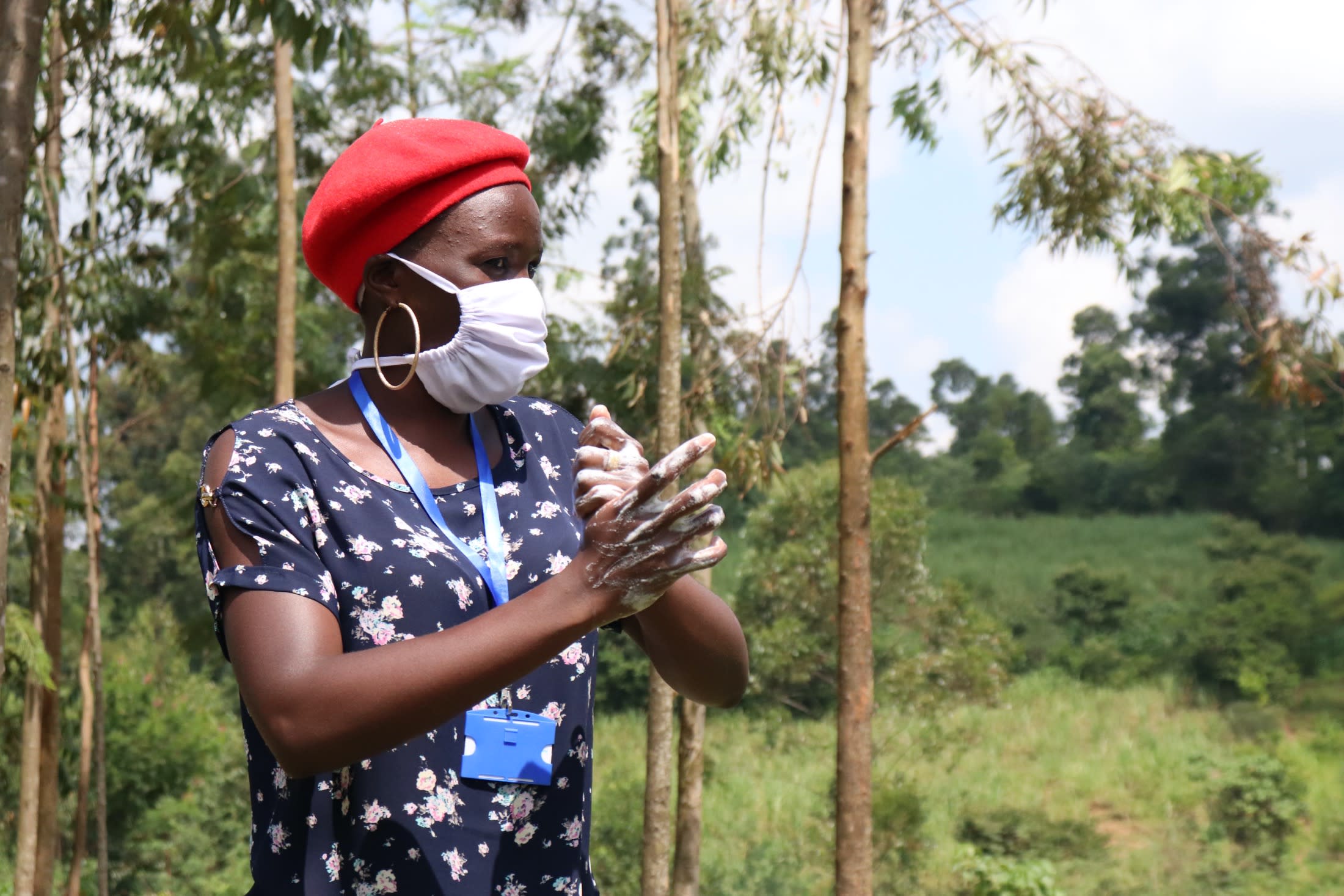
We are carrying out awareness and prevention trainings on the virus in every community we serve. Very often, our teams are the first (and only) to bring news and information of the virus to rural communities like Ewamakhumbi, Kenya.
We trained more than 14 people on the symptoms, transmission routes, and prevention of COVID-19. Before there were any reported cases in the area, we worked with trusted community leaders and the Water User Committee to gather community members for the training.

We covered essential hygiene lessons:
- Demonstrations on how to build a simple handwashing station
- Proper handwashing technique
- The importance of using soap and clean water for handwashing
- Cleaning and disinfecting commonly touched surfaces including at the water point.

We covered COVID-19-specific guidance in line with national and international standards:
- Information on the symptoms and transmission routes of COVID-19
- What social distancing is and how to practice it
- How to cough into an elbow
- Alternative ways to greet people without handshakes, fist bumps, etc.
- How to make and properly wear a facemask.
During training, we installed a new handwashing station with soap near the community’s water point, along with a sign with reminders of what we covered.

Due to the rampant spread of misinformation about COVID-19, we also dedicated time to a question and answer session to help debunk rumors about the disease and provide extra information where needed.
We continue to stay in touch with this community as the pandemic progresses. We want to ensure their water point remains functional and their community stays informed about the virus.

Water access, sanitation, and hygiene are at the crux of disease prevention. You can directly support our work on the frontlines of COVID-19 prevention in all of the communities we serve while maintaining their access to safe, clean, and reliable water.


 Protected Spring
Protected Spring
 Rehabilitation Project
Rehabilitation Project










